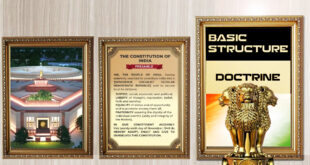This newspaper always draws the line between news and views
A reader wrote to us wondering whether discussions on technological disruptions and their impact on the news ecology are a ploy to deflect attention from the failings of the news media. He listed a set of “non-stories” — speculations at best and motivated plants at worst — that appeared in a section of the Indian media, mostly on television, over the past three months and asked how they could have been categorised as news. He also wanted to know whether Alan Rusbridger’s book, Breaking News: The Remaking of Journalism and Why It Matters Now, could help him understand the media better. In my previous column, “Holding up the mirror” (Sept. 10), I had written that Mr. Rusbridger poses a number of questions on the media today. Another reader wanted these questions answered with Indian examples. How I wish I had as much space as that given to reportage on ‘Ground Zero’ as well as the varied experience and the expertise of Mr. Rusbridger to do justice to those questions!
The problem with opinion pieces that crowd cyberspace is that they assume that readers know all the facts of the issue. This is not the case. Complex issues need to be reported in full detail before they are interpreted and analysed. It is a fact that there are non-stop news scrolls running at the bottom of the television screen on news channels and at least 10 tweets a minute on our phones alerting us of breaking news. But that is just that — breaking news, not the full report. As the old saying goes, the devil is in the detail, and it’s the newspaper that provides crucial details.
Take demonetisation, for instance. Can one make an informed analysis of the decision without knowing the basic facts? This newspaper reported that demonetisation involved nearly 86% of the currency in the economy, as well as the government’s stated objectives, which were to eradicate black money, curb terror financing, and encourage the digital economy. Articles supporting and opposing demonetisation will make sense only when we have all the basic information. The government’s shifting goalposts emerged clearly because this newspaper documented nearly every argument given by the government as the rationale for demonetisation.
These essential tasks could be seen as boring as they may lack the thrill of the gladiatorial blood sport of prime-time television. For some, this newspaper may never be the first destination for news. But even the most strident critic of this newspaper trusts what is published here because The Hindu never blurs the critical line between news and views, and the line between journalism and business. No amount of technological change will alter these values.
Check Also
Joint Parliamentary Committees (JPCs): Scrutinizing the Executive
Introduction In a parliamentary democracy, ensuring accountability of the executive is paramount. Joint Parliamentary Committees …
 Chinmaya IAS Academy – Current Affairs Chinmaya IAS Academy – Current Affairs
Chinmaya IAS Academy – Current Affairs Chinmaya IAS Academy – Current Affairs



